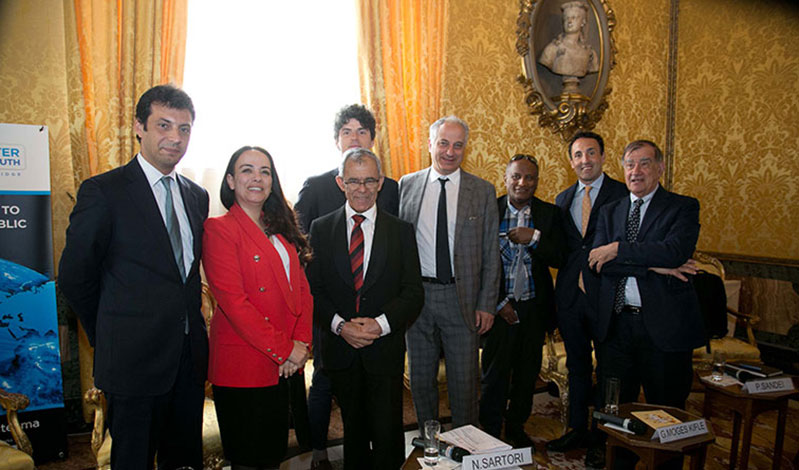
Eastern Africa is blessed with abundant energy resources. If sustainably developed, these resources have the potential to make the region achieve universal electricity access, which is a key factor in the achievement of the Sustainable Development Goals. It is this matter that Prof Izael Da Silva, the DVC Research and Innovation, tackles in his latest publication, a chapter in “Empowering Africa – Access to Power in the African continent.”
The book, published by the Swiss publisher Peter Lang in March 2018, was edited by Lorenzo Colantoni, Giuseppe Montesano and Nicolo Sartori. Peter Lang is one of the top five publishers in the world, and the most reputable in the field of social sciences and politics. The book was published in cooperation with Istituto Affari Internazionali, Enel Foundation and the Policy Centre for the New South.
Prof Da Silva’s chapter, which he presented during the book launch on 6th May 2019 in Rome, was aptly titled “Energy in Eastern Africa.” It begins by giving a brief description of the energy landscape in Burundi, Djibouti, Eritrea, Ethiopia, Kenya, Madagascar, Rwanda, Somalia, South Sudan, Tanzania and Uganda, which constitute the greater Eastern Africa region.
The chapter highlights how countries such as Uganda and Ethiopia alone have hydropower potential which can power half of Africa if exploited well. Tanzania, on the other hand, has access to large reserves of natural gas while South Sudan sits on top of large oil reserves. Djibouti can power itself entirely off geothermal energy, and Somalia, once stabilised, has access to abundant amounts of solar energy.
Despite all this potential, the region remains reliant on charcoal, firewood and farm waste as its primary energy source. Moreover, the electricity sector lacks proper infrastructure, registers low production, and is bridled by inefficient systems and high transmission losses and high costs. In most of the East African countries, less than 20% of the population has access to electricity. At 55% access, Kenya and Djibouti are the most developed countries in the region in this respect.
Prof Da Silva notes that as the region’s population and economy continue to expand, energy deficits will plague the region even further if nothing is done to address the situation. He highlights the challenges standing in the way and what the governments in the region are currently doing to increase electricity access. He also makes policy recommendations that countries would do well to consider as they set about the quest for universal access to electricity for the “Dark Continent”.
He concludes the chapter by emphasising the potential energy market available in these markets and the importance of these countries to focus on renewable energy.
A summary of the entire book is available on the distributor’s website, where it can also be purchased: https://www.peterlang.com/view/title/68175.
This article was compiled by Anne Njeri.
If you have a story, kindly email: communications@strathmore.edu

